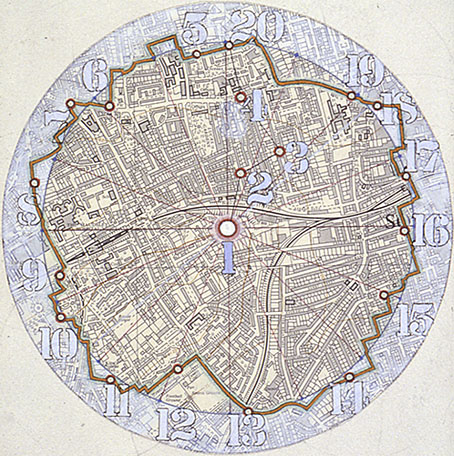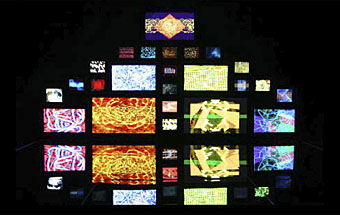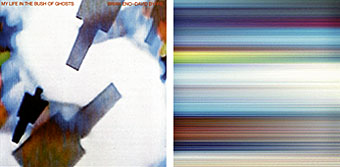Tom Phillips has long been one of my favourite contemporary artists and he’d certainly be my candidate for one of the world’s greatest living artists even though the world at large stubbornly refuses to agree with this opinion. Phillips’ problem (if we have to look for problems) would seem to be an excess of talent in an art world that doesn’t actually like people to be too talented at all (unless they’re dead geniuses like Picasso) and a lack of the vaunting ego that propels others into the spotlight.
Phillips is predominantly a painter but a restlessly experimental one. On my journey through the London galleries in May I visited the National Portrait Gallery, a rather dull place mostly filled with pictures of the rich and famous by the rich and famous. There were two Tom Phillips works on display in different rooms, inadvertently showing his artistic range: one, a fairly standard (if very finely detailed) portrait of Iris Murdoch, the other a computer screen showing a portrait of Susan Adele Greenfield which manifested as an endlessly-changing series of 169 processed drawings and video stills. One work was static and traditional, the other fluid, contemporary and unlike anything else in the building.




